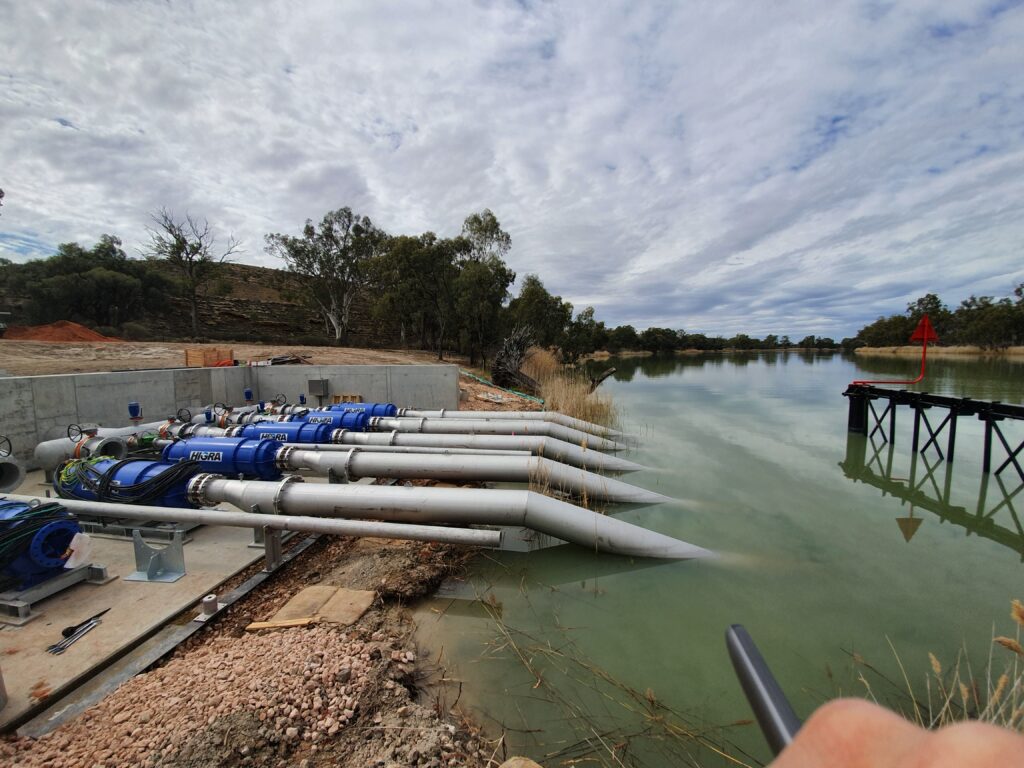Amphibious Pump vs. Horizontal Centrifugal Pump: Which is the Best Option for Your Project?

When choosing the ideal pump for your project, several factors should be taken into consideration, such as the type of fluid to be pumped, flow rate, manometric height, installation location, and budget. To help you make the best decision, here you can find the key characteristics of amphibious pumps and horizontal centrifugal pumps:
Amphibious pump: The amphibious pump is a modern innovation designed to operate both in and out of water, offering a versatile and flexible solution for a wide range of applications.
With a compact monoblock system, it is simple and quick to install, and it operates in any position, without the need or cost of civil works. Furthermore, its ability to pump liquids from flooded areas or dry wells makes it an ideal choice for challenging situations.
Main Advantages of the Amphibious Pump:
Unrivaled versatility: Its ability to operate both submerged and in dry line makes it highly adaptable to a variety of scenarios, from drainage of flooded areas to irrigation in agricultural fields.
Ease of installation: It does not require a recirculation system to prevent cavitation, reducing significantly installation time and costs. The monoblock system eliminates the need for alignment of the drive shaft and other components, making the installation even more simplified.
Lower installation cost: Its simple installation and operation usually result in lower initial cost compared to horizontal centrifugal pumps. The compact monoblock system also helps reduce installation costs.
Portability: Its ability to operate in remote or hard-to-reach locations makes it the ideal choice for projects in isolated areas. Its compact size and weight make transport and installation easier. Reduced maintenance: With fewer moving parts prone to wear, the amphibious pump requires less maintenance over time, saving time and resources. The submersible motor is cooled by the fluid being pumped, reducing the need for maintenance interventions.
High hydro-energy efficiency: Rotors and diffusers are designed using state-of-the-art software (Inventor and ANSYS CFX) with hydrodynamic simulations, providing high hydropower efficiency.
Some examples of amphibious pump applications:
Drainage of flooded areas
Irrigation of agricultural fields
Septic tank pumping
Water pumping from dry wells
Water supply in remote areas
Mining
Industry
Construction



Horizontal Centrifugal Pump: The horizontal centrifugal pump is a more traditional option, operating by the rotation of an impeller to pump large volumes of liquid at high flow rates.
Although it is efficient for certain applications, such as water supply in cities or industrial processes, it can limit its versatility in submerged models compared to the amphibious pump. In applications outside of water, it operates with an air-cooled motor, which results in higher noise levels, elevated ambient temperature due to the motor’s thermal dissipation, and the need for a civil structure suited to the equipment’s format. Additionally, it cannot work in areas at risk of flooding, always requiring a safe elevation to prevent equipment damage.
Main Advantages of the Horizontal Centrifugal Pump:
High flow and head: Ideal for applications that require pumping large volumes of liquids at high pressures.
Energy efficiency: Due to its optimized design, the horizontal centrifugal pump offers high energy efficiency, reducing energy consumption.
Diversity of models: Available in a wide range of models and sizes to meet different needs and applications.
Some examples of horizontal centrifugal pump applications:
Water supply in cities
Irrigation of large areas
Industrial processes
Water and sewage treatment
Industry
Mining
Conclusion: The amphibious pump stands out as a versatile, robust, quiet, and energy-efficient solution. Its ease of installation, operation, and maintenance makes it ideal for a wide range of projects. For most applications that require practicality, efficiency, and flexibility, the amphibious pump is the better choice.
Always consult a specialist to assess the specific needs of your project and select the ideal pump.


